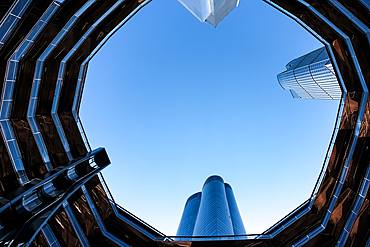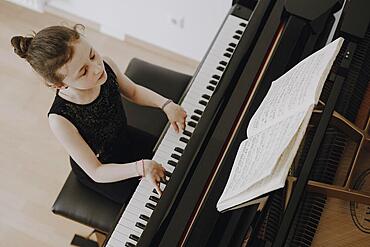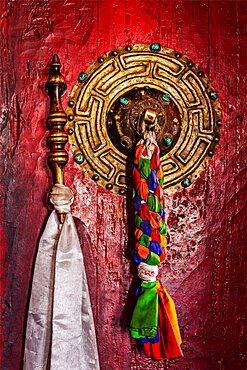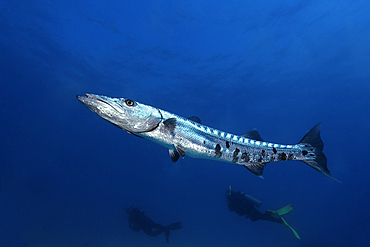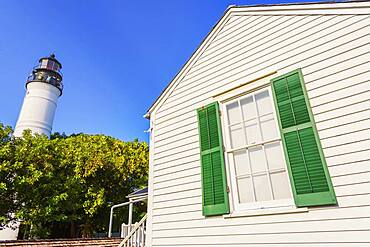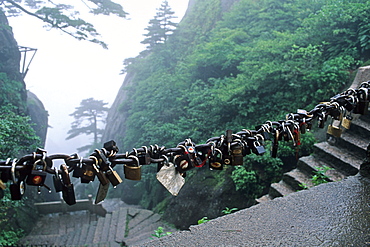Recent searches
Loading...
1373-47 - Architectural detail of The Vessel, a 16 storey structure and visitor attraction constructed as a key element of the Hudson Yards Redevelopment Project, Manhattan, New York City, United States of America, North America
1373-46 - Architectural detail of The Vessel, a 16 storey structure and visitor attraction constructed as a key element of the Hudson Yards Redevelopment Project, Manhattan, New York City, United States of America, North America
1373-43 - Architectural detail of The Vessel, a 16 storey structure and visitor attraction constructed as a key element of the Hudson Yards Redevelopment Project, Manhattan, New York City, United States of America, North America
1373-42 - Architectural detail of The Vessel, a 16 storey structure and visitor attraction constructed as a key element of the Hudson Yards Redevelopment Project, Manhattan, New York City, United States of America, North America
832-403675 - Overhead view young woman playing piano
832-403866 - Close up boy touching digital tablet screen white desk
832-403811 - Flat lay keyboard with notebook with password information
832-403753 - New home keys plan table with defocused couple
832-403160 - Real estate agent shaking hand client holding keys
832-401295 - Elegant girl sits at the concert grand and plays the piano
832-401296 - Elegant girl sits at the concert grand and plays the piano
826-780 - St. Aidan's Church, a 12th century place of worship, a key location in spreading Christianity during the Anglo-Saxon era, and its churchyard, Bamburgh, Northumberland, England, United Kingdom, Europe
826-777 - Anglo-Saxon Cross in the churchyard of St. Aidan's Church, a 12th century place of worship and a key location in the introduction of Christianity during Anglo-Saxon times, Bamburgh, Northumberland, England, United Kingdom, Europe
832-401066 - Gray angelfish (Pomacanthus arcuatus), Nursery dive site, Tavernier, Florida Keys, Florida, USA, North America
832-401067 - Green turtle (Chelonia mydas), Nursery dive site, Tavernier, Florida Keys, Florida, USA, North America
832-401065 - Hawksbill turtle (Eretmochelys imbricata imbricata), John Pennekamp Coral Reef State Park dive site, Key Largo, Florida Keys, Florida, USA, North America
832-401049 - Atlantic goliath grouper (Epinephelus itajara) with open mouth at cleaning station. Dive site John Pennekamp Coral Reef State Park, Key Largo, Florida Keys, Florida, USA, North America
832-401047 - Caribbean reef shark (Carcharhinus perezii), John Pennekamp Coral Reef State Park dive site, Key Largo, Florida Keys, Florida, USA, North America
832-401046 - Green turtle (Chelonia mydas), dive site John Pennekamp Coral Reef State Park, Key Largo, Florida Keys, Florida, USA, North America
832-398407 - Low key photo of whiskey with ice in facetted rocks glass
832-398276 - Low key photo of dining table with candlelight
1366-234 - Abu Simbel, Aswan, Egypt. February 23, 2022. Caretaker holding a large key in the shape of an Ankh in the Great Temple of Ramesses II.
1366-232 - Abu Simbel, Aswan, Egypt. February 23, 2022. Caretaker holding a large key in the shape of an Ankh in the Great Temple of Ramesses II.
1366-233 - Abu Simbel, Aswan, Egypt. February 23, 2022. Caretaker holding a large key in the shape of an Ankh in the Great Temple of Ramesses II.
1366-231 - Abu Simbel, Aswan, Egypt. February 23, 2022. Caretaker holding a large key in the shape of an Ankh in the Great Temple of Ramesses II.
1366-230 - Abu Simbel, Aswan, Egypt. February 23, 2022. Caretaker holding a large key in the shape of an Ankh in the Great Temple of Ramesses II.
1366-229 - Abu Simbel, Aswan, Egypt. February 23, 2022. Caretaker holding a large key in the shape of an Ankh in the Great Temple of Ramesses II.
1366-228 - Abu Simbel, Aswan, Egypt. February 23, 2022. Caretaker holding a large key in the shape of an Ankh in the Great Temple of Ramesses II.
1366-164 - Abu Simbel, Aswan, Egypt. February 22, 2022. Caretaker holding a large key in the shape of an anhk at the Great Temple of Ramesses II.
1178-43964 - Egypt, Luxor, Hotel room key with golden tag
832-397724 - Door handle of gate door of gompa, Tibetan Buddhist monastery. Diskit, Nubra valley, Ladakh, India, Asia
832-397227 - Retro metal keys form a heart shape on black
1113-107541 - large stone key on the roof of a boutique hotel, Oia, Santorini, Santorin, Cyclades, Aegean Sea, Mediterranean Sea, Greece, Europe
1178-42934 - Heart shaped key on decorative white cloth
1292-2364 - Piazza San Pietro, Vatican City, UNESCO World Heritage Site, Rome, Lazio, Italy, Europe
1292-2363 - Piazza San Pietro, Vatican City, UNESCO World Heritage Site, Rome, Lazio, Italy, Europe
1353-39 - High Key image of weathered Creel Boat Peedie Lass, Cromarty Boatyard, The Black Isle, Moray, Scotland, United Kingdom, Europe
1178-41225 - Smiling Mixed Race woman unlocking apartment mailbox
1178-38921 - Purse, wallet, gun and accessories on blue background
1178-38922 - Caucasian woman laying on floor near wallet, gun and cell phone
1348-4577 - Everglades, Florida, Usa, True Colour Satellite Image. Satellite image of the Everglades
1348-3069 - Color satellite image of Southern Florida, United States. It shows Miami at east, Everglades National Park at center, and the Florida Keys at south. Image collected on January 06, 2017 by Sentinel-2 satellites.
1113-105728 - Detail shot of a Chinese, decorative key chain. Bali, Indonesia.
1350-2569 - Great barracuda, Sphyraena barracuda, and divers, Molasses Reef, Key Largo, Florida, USA, Atlantic Ocean
1350-2688 - Verges, a small town in the Northeast of Catalonia (Spain), during Easter celebrates the Procession of Verges with skeletons dancing on the sound of a drum, Roman soldiers, known as the 'Manages', and a representation of the life and crucifixion of Jesus Christ. The Procession features the Dance of Death, a tradition from the Middle Age associated with epidemics and plagues and the only one remaining in Spain Ten skeletons dance to the beat of a drum to remember that no one is exempt of death. The backdrop of the medieval walls and towers of Verges is key to this macabre staging.
1350-2570 - Scuba diver handles nurse shark, Ginglymostoma cirratum, Molasses Reef, Key Largo, Florida, USA, Atlantic Ocean
1350-2693 - Verges, a small town in the Northeast of Catalonia (Spain), during Easter celebrates the Procession of Verges with skeletons dancing on the sound of a drum, Roman soldiers, known as the 'Manages', and a representation of the life and crucifixion of Jesus Christ. The Procession features the Dance of Death, a tradition from the Middle Age associated with epidemics and plagues and the only one remaining in Spain Ten skeletons dance to the beat of a drum to remember that no one is exempt of death. The backdrop of the medieval walls and towers of Verges is key to this macabre staging.
1350-2692 - Verges, a small town in the Northeast of Catalonia (Spain), during Easter celebrates the Procession of Verges with skeletons dancing on the sound of a drum, Roman soldiers, known as the 'Manages', and a representation of the life and crucifixion of Jesus Christ. The Procession features the Dance of Death, a tradition from the Middle Age associated with epidemics and plagues and the only one remaining in Spain Ten skeletons dance to the beat of a drum to remember that no one is exempt of death. The backdrop of the medieval walls and towers of Verges is key to this macabre staging.
1350-2695 - Verges, a small town in the Northeast of Catalonia (Spain), during Easter celebrates the Procession of Verges with skeletons dancing on the sound of a drum, Roman soldiers, known as the 'Manages', and a representation of the life and crucifixion of Jesus Christ. The Procession features the Dance of Death, a tradition from the Middle Age associated with epidemics and plagues and the only one remaining in Spain Ten skeletons dance to the beat of a drum to remember that no one is exempt of death. The backdrop of the medieval walls and towers of Verges is key to this macabre staging.
1350-2690 - Verges, a small town in the Northeast of Catalonia (Spain), during Easter celebrates the Procession of Verges with skeletons dancing on the sound of a drum, Roman soldiers, known as the 'Manages', and a representation of the life and crucifixion of Jesus Christ. The Procession features the Dance of Death, a tradition from the Middle Age associated with epidemics and plagues and the only one remaining in Spain Ten skeletons dance to the beat of a drum to remember that no one is exempt of death. The backdrop of the medieval walls and towers of Verges is key to this macabre staging.
1350-2691 - Verges, a small town in the Northeast of Catalonia (Spain), during Easter celebrates the Procession of Verges with skeletons dancing on the sound of a drum, Roman soldiers, known as the 'Manages', and a representation of the life and crucifixion of Jesus Christ. The Procession features the Dance of Death, a tradition from the Middle Age associated with epidemics and plagues and the only one remaining in Spain Ten skeletons dance to the beat of a drum to remember that no one is exempt of death. The backdrop of the medieval walls and towers of Verges is key to this macabre staging.
1350-2687 - Verges, a small town in the Northeast of Catalonia (Spain), during Easter celebrates the Procession of Verges with skeletons dancing on the sound of a drum, Roman soldiers, known as the 'Manages', and a representation of the life and crucifixion of Jesus Christ. The Procession features the Dance of Death, a tradition from the Middle Age associated with epidemics and plagues and the only one remaining in Spain Ten skeletons dance to the beat of a drum to remember that no one is exempt of death. The backdrop of the medieval walls and towers of Verges is key to this macabre staging.
1350-2689 - Verges, a small town in the Northeast of Catalonia (Spain), during Easter celebrates the Procession of Verges with skeletons dancing on the sound of a drum, Roman soldiers, known as the 'Manages', and a representation of the life and crucifixion of Jesus Christ. The Procession features the Dance of Death, a tradition from the Middle Age associated with epidemics and plagues and the only one remaining in Spain Ten skeletons dance to the beat of a drum to remember that no one is exempt of death. The backdrop of the medieval walls and towers of Verges is key to this macabre staging.
1350-2696 - Verges, a small town in the Northeast of Catalonia (Spain), during Easter celebrates the Procession of Verges with skeletons dancing on the sound of a drum, Roman soldiers, known as the 'Manages', and a representation of the life and crucifixion of Jesus Christ. The Procession features the Dance of Death, a tradition from the Middle Age associated with epidemics and plagues and the only one remaining in Spain Ten skeletons dance to the beat of a drum to remember that no one is exempt of death. The backdrop of the medieval walls and towers of Verges is key to this macabre staging.
1350-2697 - Verges, a small town in the Northeast of Catalonia (Spain), during Easter celebrates the Procession of Verges with skeletons dancing on the sound of a drum, Roman soldiers, known as the 'Manages', and a representation of the life and crucifixion of Jesus Christ. The Procession features the Dance of Death, a tradition from the Middle Age associated with epidemics and plagues and the only one remaining in Spain Ten skeletons dance to the beat of a drum to remember that no one is exempt of death. The backdrop of the medieval walls and towers of Verges is key to this macabre staging.
1350-2694 - Verges, a small town in the Northeast of Catalonia (Spain), during Easter celebrates the Procession of Verges with skeletons dancing on the sound of a drum, Roman soldiers, known as the 'Manages', and a representation of the life and crucifixion of Jesus Christ. The Procession features the Dance of Death, a tradition from the Middle Age associated with epidemics and plagues and the only one remaining in Spain Ten skeletons dance to the beat of a drum to remember that no one is exempt of death. The backdrop of the medieval walls and towers of Verges is key to this macabre staging.
832-392874 - Woman signing real estate contract papers holding house keys and home keychain with small model home in front
832-392876 - Real estate agent and customer sign contract papers with house keys and small model home in front
832-391471 - Highway patrol police and sports car next to alcoholic drink and keys under spot light
832-391466 - Alcoholic drink and car keys under spot light
718-2675 - Smathers Beach, Key West, Florida, United States of America, North America
718-2674 - Lighthouse, Key West, Florida, United States of America, North America
718-2673 - Lighthouse, Key West, Florida, United States of America, North America
718-2655 - Brown pelican (Pelecanus occidentalis) fishing, Key West, Florida, United States of America, North America
1116-49232 - Bouquet of colourful flowers in a decorative container
1116-49234 - Bouquet of colourful flowers in a decorative container
1113-103593 - padlocks, locked and the key thrown down the mountain, symbol for couples to pledge faithfulness, mountain, Huang Shan, Anhui province, China, Asia, World Heritage, UNESCO
1310-283 - View through palm trees to facade of a typical wooden house, Old Town, Key West, Florida Keys, Florida, United States of America, North America
1310-287 - View across the Gulf of Mexico, sunset, brown pelican prominent, Mallory Square, Old Town, Key West, Florida Keys, Florida, United States of America, North America
1310-281 - Typical pastel-coloured wooden houses on Truman Avenue, Old Town, Key West, Florida Keys, Florida, United States of America, North America
1310-282 - Victorian brick-built clock tower of the Monroe County Court House, Old Town, Key West, Florida Keys, Florida, United States of America, North America
1310-285 - Giant US flag flying beneath a deep blue sky above Truman Avenue, Old Town, Key West, Florida Keys, Florida, United States of America, North America
1310-284 - Brilliant white facade of the historic Curry Mansion, now a guest house, Old Town, Key West, Florida Keys, Florida, United States of America, North America
1310-280 - Author's studio at the Ernest Hemingway Home and Museum, Old Town, Key West, Florida Keys, Florida, United States of America, North America
1310-286 - Adult male red-bellied woodpecker (Melanerpes carolinus), clinging to tree, Key Vaca, Marathon, Florida Keys, Florida, United States of America, North America
832-388042 - Little egret (Egretta garzetta) at the beach, Longboat Key, Florida, USA, North America
832-388305 - Floating Mute swans (Cygnus olor) in fog, High Key, Lower Rhine, North Rhine-Westphalia, Germany, Europe
832-386788 - Locker with key in a financial institution, Duesseldorf, Germany, Europe
832-387145 - Statue of St. Peter holding the key at Piazza San Pietro, Vatican, Rome, Italy, Europe
832-384581 - Hand taps computer keyboard, motion blur, Germany, Europe
1178-28993 - Disinfectant wipes, smart phone and keys
1323-3 - Joshua Tree in high-key black and white, Joshua Tree National Park, California, United States of America, North America

